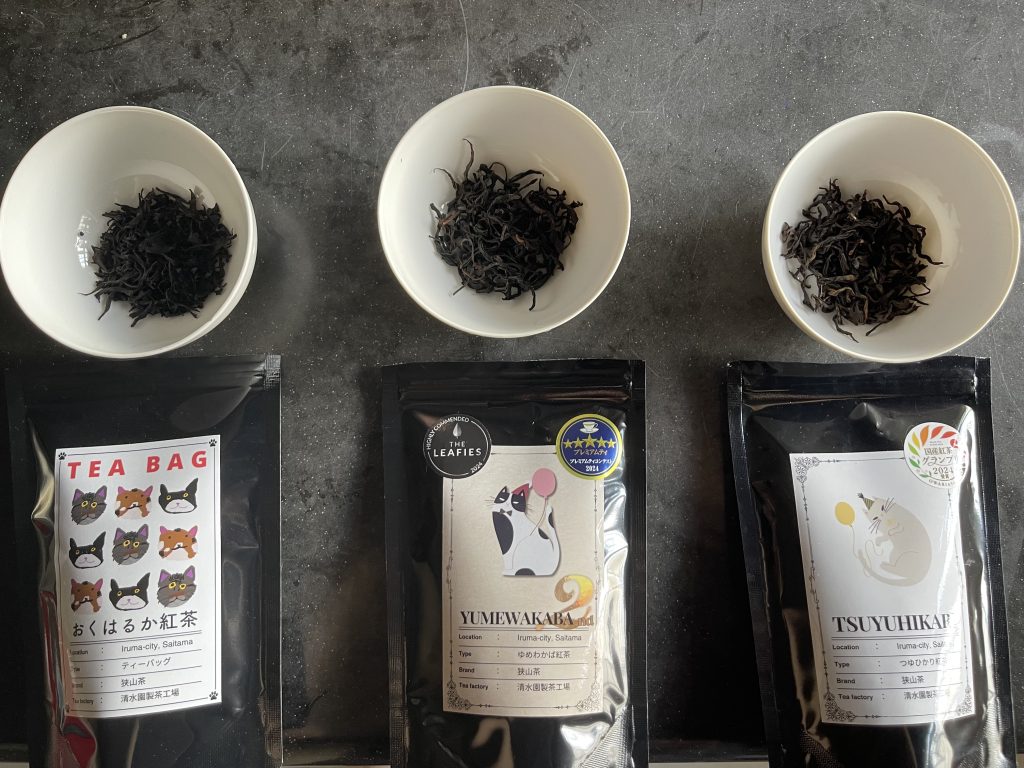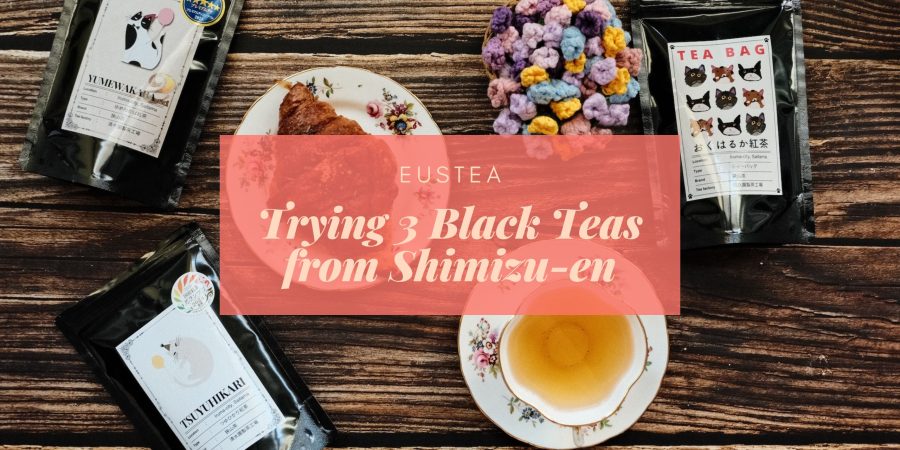This post has been a loooooong time in the making, and I did consider just enjoying the teas for myself but some things are too good not to be shared (though as a result, I don’t have as many photos as I normally would). If you recall, way back in January, I went to Sayama and visited a few amazing farms and bought far more tea than I needed. Well, as I’ve been drinking these teas, it occurred to me that I would be very happy to just stick to exploring Sayama teas because these are so delicious!
But okay, most people won’t be like me and buy multiple single origin black teas just to try, so I thought I would do a quick post on the three black tea cultivars that I’ve been drinking and hopefully interest a few people to get these teas online (there is the online shop for the NPO) or directly if you visit Saitama.

In general, I brewed all three teas the same way. The first steep used very hot, probably about 90 degrees celsius water. I’d cover the leaves with water for 1 minute to let them unfurl and then fill it up with more hot water and steep for another 2 minutes. (this is a method I learned from the farm). The second steep was for 4 minutes and the third for 5 minutes.
I tried these teas individually (i.e. just drank the tea alone) and also did one comparison where I put the same amount of tea into a tea tasting cup and steeped them all for the same amount of time and my tasting notes are basically the distillation of all that drinking and attempting to discern what flavours I got (I got “delicious” but apparently not writing tea reviews means I forgot how to identify different flavours).
Tsuyuhikari
The Tsuyuhikari has a sweet floral scent that isn’t too strong. I didn’t find it very sweet but there was a distinctive floral notes – in one of my tea sessions, I thought of jasmine and the type of floral note found in lightly roasted high mountain oolongs. Another word that popped into my head when I was comparing the three teas is “clear” – I think that compared to the other two, it’s quite a straightforward tea, basically just the floral note with some sweetness.
I found that the floral note was more noticeable in the second steep and the third steep was the limit for this tea.
Okuharuka
If the Tsuyuhikar was the “clear” tea, then Okuharuka was the tea with the most flavour – I found this to be sweet, malty, and floral. Like the Tsuyuhikari, it’s really only good for three steeps, but if you’re looking for something that’s a lighter and more floral version of the traditional black tea, this one may be for you.
I also found the floral note here to be the strongest (both in smell and taste), possibly because the okuharuka cultivar has coumarin (more on this cultivar here), which give the sencha a floral note and might also be in the black tea. Alternatively, it could also be because this was not available in loose leaf, and I bought the tea bag form and have been cutting open the teabags to brew as I would loose leaf and the smaller leaves steep faster as a result.
Yumewakaba
This tea was somewhere in between the okuharuka and the tsuyuhikari. It’s slightly malty and slightly sweet, with no bitterness or astringency (actually, none of the three teas had those, but somehow I noticed it with this tea).
Interestingly, I thought the second steep was “richer” because the floral note changed subtly and I got a bit more of a malty note as well. The third steep had the floral note but the tea did taste less malty.
Final thoughts

If I didn’t try so hard, I would have just assumed that all three teas are basically the same and honestly, if you can’t decide on which tea to get, I think any of the three would be a good introduction to Shimizu-en’s black teas. After all, things that would affect the taste of a tea include
- Processing method
- Terroir
- Cultivar
- If it’s first/second flush/third flush
And if I’m not wrong, the fact that these three teas are from the same farm means a lot of these variables are controlled. The main differences would probably come from the cultivar itself, which means it might be harder to taste a difference (vs a different tea which is from a different cultivar on a different farm) but it’s also fun to try them side by side.
I have a few more interesting teas, including a white tea, that I’ve not yet opened so I will try to talk about them here when I do!

Ooooo and the labels have cats on them!!! 😊
Yes!!! The packaging is sooo cute as well!
I am in *love* with the kitty labels!!
right??? So cute and the teas taste great too!